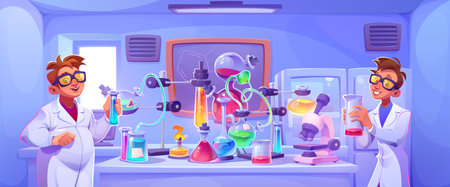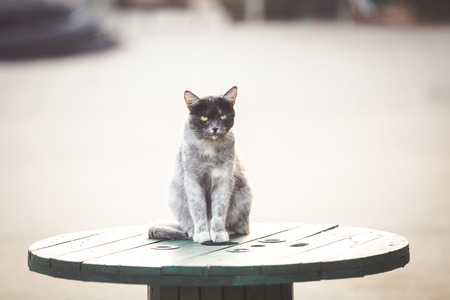Introduction: Why Hydration Matters for British Cats
Keeping your cat well-hydrated is one of the simplest yet most crucial aspects of feline care, particularly here in Britain. Our unique blend of drizzly days, central heating, and often indoor-centric lifestyles can quietly influence how much water our cats actually take in. Unlike their wild ancestors, who drew moisture from prey and natural water sources, British house cats—whether prowling a city flat or snoozing in a country cottage—rely heavily on us to provide fresh, clean water. Proper hydration supports everything from kidney function to coat health, and is especially important in a UK context where weather swings from damp cold to unexpected heatwaves can catch both humans and pets off guard. Understanding the local climate and common living arrangements is key to ensuring our feline friends stay happy, healthy, and well-watered all year round.
Typical British Home Environments and Their Impact on Cat Hydration
Living in Britain, our homes are shaped by the ever-changing weather, the prevalence of central heating, and a tendency for both people and their pets to spend plenty of time indoors. While these factors make for cosy living, they also have a subtle but significant effect on how much water your feline friend needs. Let’s take a closer look at how the typical British home environment may impact your cat’s hydration requirements.
Central Heating: Warmth with a Hidden Drawback
Central heating is a staple in most UK households, especially during those damp autumn and winter months. While it keeps us snug, it can lead to drier indoor air. For cats, this means increased evaporation of moisture from their bodies, potentially causing mild dehydration if their water intake doesn’t keep up. You may notice your cat seeking out radiators or warm spots, but don’t forget that this extra heat calls for more vigilance about fresh water availability.
Cooler Weather: Less Obvious Thirst
The UK climate is famously unpredictable but often leans towards the cooler side for much of the year. Unlike in hotter countries where pets will naturally drink more to cool down, British cats may not feel as thirsty when it’s chilly. However, even in cold weather, their bodies still need adequate hydration for healthy kidney function and overall wellbeing. Don’t be fooled by the lack of panting or overt thirst—hydration is just as crucial in winter as it is in summer.
Indoor Living: Convenience or Complication?
With busy roads and urban foxes around, many UK cat owners choose to keep their pets primarily indoors. This brings some benefits—less exposure to hazards—but it also means cats rely entirely on what you provide for them at home. Outdoor cats might sip from puddles or streams; indoor cats only have access to the bowls (or fountains) you set out. Being attentive to placement and freshness of water sources becomes essential.
Comparison Table: Environmental Factors Affecting Cat Hydration in Britain
| Factor | Impact on Hydration | Action for Cat Owners |
|---|---|---|
| Central Heating | Increases air dryness; higher risk of dehydration | Provide multiple water sources; monitor intake during colder months |
| Cooler Weather | Cats feel less thirsty; risk of unnoticed dehydration | Encourage drinking with water fountains or wet food |
| Indoor Living | No natural water sources; total reliance on owner | Ensure clean, accessible water at all times; vary bowl locations |
Key Takeaway:
The unique mix of central heating, cool weather, and indoor lifestyles in Britain means cat owners need to be proactive about hydration. It’s not just about topping up a bowl—consider your home’s environment and make small changes that could make a big difference to your cat’s long-term health.

3. Spotting the Signs: Is Your Cat Getting Enough Water?
Ensuring your feline friend is properly hydrated can be a bit of a guessing game, especially in the unpredictable British climate. While cats are notorious for hiding discomfort, there are several tell-tale signs and subtle hints that every UK cat owner should keep an eye out for. Common indicators include noticeably less frequent urination or darker, stronger-smelling urine in the litter tray—a quick peek when you’re doing your daily clean-up can reveal a lot. If your cat’s gums feel tacky rather than moist, this could be another early warning sign of dehydration. Other clues include lethargy, sunken eyes, or a dull, lacklustre coat—details that might not stand out at first glance but are crucial for attentive pet parents to notice.
Keep an ear out for any changes in behaviour as well; perhaps your usually sprightly moggy seems less interested in playtime or is seeking out unusual places to rest. Watch their water bowl too—if it’s hardly touched day after day, it may be time to encourage better drinking habits or check for underlying issues. For those with outdoor cats braving the British drizzle, remember they may not always return home for water breaks, so ensuring they have access to fresh water both indoors and out is essential. By tuning into these subtle hints, you can help safeguard your cat’s health and keep them happily hydrated, whatever the British weather throws your way.
4. Encouraging Water Consumption: Tips That Work Well in the UK
Ensuring your cat stays hydrated, especially in the often unpredictable British climate, means making water as appealing and accessible as possible. Here are some practical tips tailored to UK households:
Choose the Right Water Bowl
Cats can be picky about their drinking vessels. In Britain, ceramic bowls are a popular choice due to their stability and non-porous surface, which helps keep water fresher for longer. Avoid plastic bowls, as they can retain odours and sometimes cause feline chin acne. Stainless steel is also a good alternative, but many cats prefer the feel of ceramic.
Bowl Comparison Table
| Bowl Type | Pros | Cons |
|---|---|---|
| Ceramic | Non-porous, keeps water cool, stable, easy to clean | Can chip or break if dropped |
| Stainless Steel | Durable, hygienic, easy to clean | May slide on hard floors unless rubber-bottomed |
| Plastic | Lightweight, inexpensive | Retains smells, can cause chin acne |
Cat Water Fountains: A British Favourite
The gentle trickle of a cat water fountain mimics running water, which many cats instinctively prefer. In the UK’s hard-water areas (such as London and parts of the South East), filtered fountains can also help reduce limescale build-up. Choose models that are quiet and easy to clean for best results.
Optimal Placement Around Your Home
Where you place your cat’s water matters just as much as what you put it in. In typical British homes—whether a terrace in Manchester or a flat in Edinburgh—keep water bowls away from food dishes and litter trays. Cats prefer separation between eating, drinking, and toileting areas. Try placing multiple bowls or fountains around the house; this encourages exploration and increases intake.
Location Tips Table
| Room/Area | Why It Works | Extra Tip |
|---|---|---|
| Lounge/Sitting Room | Cats like to drink while relaxing with family | Avoid draughty spots near windows or doors |
| Landing/Hallway | Easily accessible during daily wanderings | Keep away from foot traffic to avoid spills |
| Bedroom Corner | Cats may visit overnight or first thing in the morning | Choose a quiet corner for shy cats |
| Conservatory/Garden Room (if safe) | Naturally cooler environment encourages drinking in summer months | Avoid direct sunlight which can overheat water quickly |
Regional Preferences: Water Temperature & Presentation in the UK
While most British tap water is safe for cats, preferences can vary depending on local climate and traditions. In warmer southern counties during rare heatwaves, offer cool (but not ice-cold) water to tempt reluctant drinkers. In Scotland or northern regions where homes may be cooler year-round, room-temperature water is generally preferred. Always refresh bowls daily and rinse out any residue—cats have keen noses and will turn up their tails at stale or tainted water!
5. Wet vs Dry Food: Making the Right Choice for Your Cat’s Hydration
When it comes to keeping your cat hydrated here in Britain, the choice between wet and dry food—commonly referred to as pouches and biscuits—plays a significant role. Many UK cat owners opt for convenient dry biscuits, but it’s important to note that these typically contain only around 10% moisture. In contrast, wet food from tins or pouches boasts up to 80% water content, making it an excellent source of hydration for your feline friend.
Understanding British Cat Diet Preferences
Across the UK, feeding habits vary. Some households offer exclusively dry biscuits for their cats, while others prefer the convenience and perceived palatability of wet pouches. Supermarkets and local pet shops alike are stocked with both options, and many British vets recommend a balanced approach tailored to your cats individual needs.
The Hydration Impact
Cats eating primarily dry food need to drink significantly more water from their bowl to meet their daily hydration requirements—a challenge given that our feline companions often have a naturally low thirst drive. In comparison, those on a wet diet will absorb much of their necessary fluid intake directly from their meals.
Striking the Right Balance
If you’re feeding mostly biscuits, ensure fresh water is always available and consider adding a splash of water or low-salt broth to meals to entice drinking. Alternatively, mixing wet and dry food can offer the best of both worlds: dental benefits from crunching on biscuits and increased moisture intake from pouches. Remember that sudden dietary changes may upset sensitive tummies, so transition gradually if you’re introducing new foods.
Ultimately, monitoring your cat’s water consumption—regardless of whether you favour pouches or biscuits—is key. Observing their preferences and consulting with your local vet can help you create a hydration-friendly feeding routine suited to British cats’ unique lifestyles.
6. When to Worry: Dehydration and Seeking Help in the UK
While it’s natural for British cats to be a bit fussy with their water bowls, keeping an eye on signs of dehydration is crucial for your feline friend’s wellbeing. Dehydration can sneak up quietly, especially during warm summer months or if your cat is unwell. Here are the key red flags every UK cat owner should watch out for, along with practical steps to take when it’s time to seek professional help.
Spotting Signs of Dehydration
The first step is knowing what to look for. Common warning signs include:
- Lethargy: Your usually playful moggy seems tired or withdrawn.
- Loss of appetite: Ignoring food or treats, which is unlike their normal behaviour.
- Sunken eyes: Eyes may appear dull or set further back than usual.
- Poor skin elasticity: Gently pinch the scruff of your cat’s neck—if the skin doesn’t spring back quickly, this could indicate dehydration.
- Dry gums: Healthy gums should feel moist; dry or sticky gums are a warning sign.
When to Contact a British Vet
If you spot any combination of these symptoms, it’s best not to wait and see. In the UK, veterinary practices often offer same-day advice if you call ahead and explain your cat’s condition. Most vets also have emergency numbers for out-of-hours concerns. When phoning, provide clear details about the symptoms and mention any recent changes in weather, diet, or routine that might be relevant.
Contacting Animal Charities and Helplines
If cost or access to a private vet is an issue, there are several excellent animal charities across Britain ready to help. Organisations such as the RSPCA, Cats Protection, or PDSA can offer guidance over the phone and sometimes provide low-cost treatment options for those in need. Don’t hesitate to reach out—they’re accustomed to supporting pet owners from all walks of life.
Prevention Is Better Than Cure
While prompt action is essential if you suspect dehydration, regular monitoring and encouraging healthy drinking habits will go a long way towards keeping your beloved British kitty hydrated and happy year-round.
7. Conclusion: Keeping Your Cat Happy, Healthy, and Hydrated
In summary, ensuring your cat stays properly hydrated is a cornerstone of responsible pet ownership here in the UK. From providing fresh water daily and experimenting with different bowls or fountains, to incorporating wet food or broths into their diet, there are plenty of British-friendly ways to encourage healthy drinking habits. Remember, our often unpredictable British weather and central heating can affect your feline’s hydration needs throughout the year. By paying close attention to their water intake and acting promptly if you spot signs of dehydration, you’re taking proactive steps towards a happier, healthier moggy. So, pop the kettle on for yourself and refresh that water bowl for your furry companion—because a well-hydrated cat is a contented member of the family. Let’s all do our bit to keep Britain’s cats purring with health!


